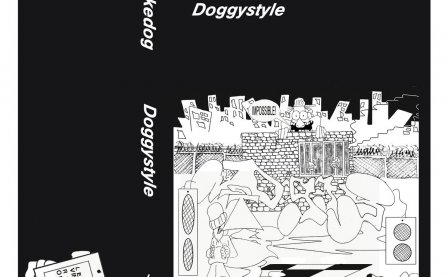There was a time in my life when I was almost exclusively listening to beat tapes. That obsession had long since faded until just recently, when nostalgia made me revisit some of my most fondly-remembered tapes. Going through them, I realized most of my favorite tracks were the ones where the drums mattered the least. I apparently never really cared much for the beats themselves when listening to beat tapes.
What mattered to me were the samples. But I wasn’t interested in where the samples came from or the melodies, rhythms, or harmonies enclosed in them. I was interested in their surface qualities, like the effect produced when they were repeating, changing from being distinct sounds into a form of ambience, a drawn-out feeling captured in a loop that slowly fills the space and transforms listening to something between activity and passivity. The sound ends up as a natural part of our being in that moment, something environmental.
Repetition collapses the distinct musical qualities of a loop into a single sound; the different instruments in it become one and then slowly turn into something physical. Elements are weaved in and out as the loop captures them, incorporates them into itself, becomes the place where the sound lives. Then you begin to notice the little shifts in its structure, places where the accents are falling differently, where the pitch is altered. When the loop becomes something lived in and familiar, you start to notice that the repetition of it produces difference, one that would go unnoticed otherwise. It becomes not just an act of strict reproduction, but rather of creation, an active force. Think about what measure of duration as Aiôn meant for Deleuze: a passage that blends the past, the future, and the present, that escapes strict regulation, repeats in flows or spirals rather than in straight lines.
Maybe Ahnnu understood that feeling. Listen to how the sounds on Special Forces, whether sampled or not, recall early electronic music and jazz, two styles of music bent on discovering how repetition can be creation and not just reproduction. Notice how the patina of hiss feels both repetitious yet ever-evolving on tracks like “Latro”; or how the drums, when present, blend into the album’s ambience; or how, on “War Stage,” the rhythm provides additional plasticity to the loops, with single drums changing places throughout the time, accents alternating. Listen close, and you’ll notice how the sounds come apart and back together again, how there is no strict sense of time, but rather an act of weaving that is in perpetual motion, elements swapping places, reinforcing one another while caught up in the creation of this blurred structure. Cutting up or dissecting the tracks here would be pointless. Repetition as a spiral exists only as a whole; only in its duration can it be a force driving the creation of something new.
I don’t remember how many times in a row I’ve listened to Special Forces. It doesn’t really matter either, because I don’t think I noticed it ending. Vaguely familiar sounds come back again, but my consciousness tells me there is something new to them, something I have not noticed the previous listen: a pitch-wavering here, an abrupt hi-hat pattern there, an electronic blip. The recognizable loops of single tracks merge into an elongated act of repetition, the album playing over and over again. After a tiring day, Special Forces effortlessly fills my apartment, comforting and intriguing at the same time. Listening slowly turns from an active act to an intermediary state, which is where I’m stuck, somewhere between the physical and the mental.




